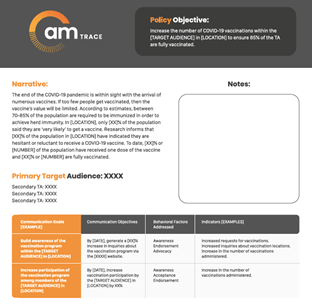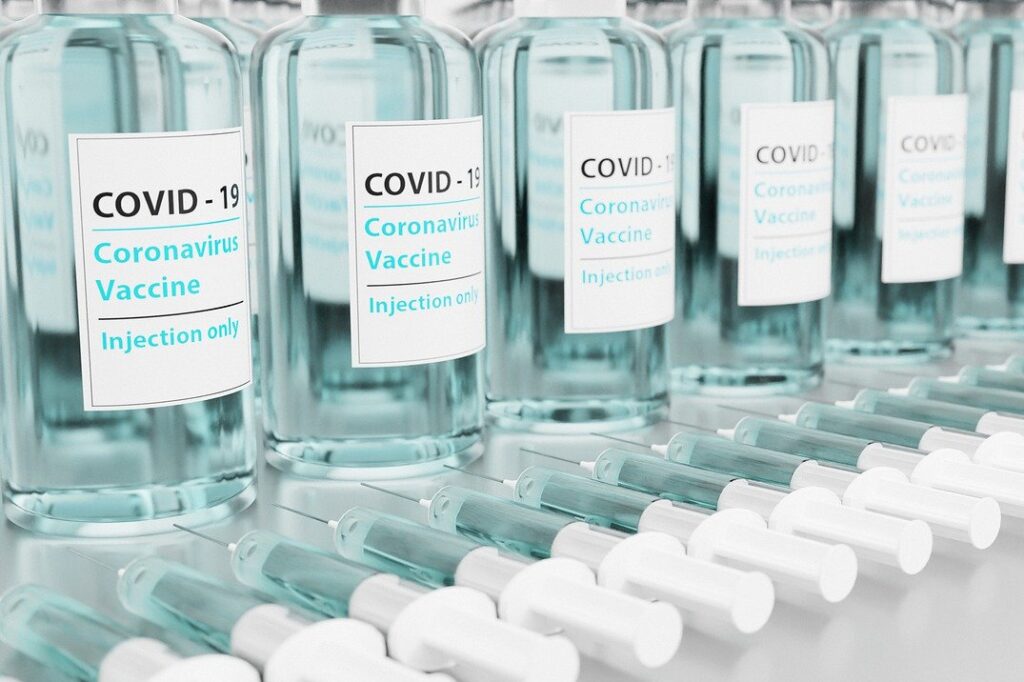With vaccine supply outpacing demand, boosting?public awareness and confidence in COVID-19 vaccines?remains critical.?Federal, state, and local?governments are identifying and employing strategies to improve vaccine confidence across different populations. In NASHP’s recent webinar, “State Strategies to Improve Vaccine Confidence,” speakers from the Centers for Disease Control and Prevention (CDC), the Oregon Health Authority, and AM TRACE discussed strategies and shared tools policymakers can employ to achieve this goal.
As more than half of all American adults are fully vaccinated, and children 12 years and older continue to receive their vaccinations, states are working to further increase access, removing barriers, and providing incentives for those who are yet to be vaccinated. Recent polling shows that up to 40 percent of adults fall into one of several camps: those who will “wait and see,” those who will only get the vaccine if required, and those who will definitely not get the vaccine, and strategies to reach these different groups vary. Vaccination rates also vary by state: 14 jurisdictions have vaccinated 70 percent of all adults with at least one dose of a COVID-19 vaccine, while in other states, less than 40 percent of the adult population has received one dose. Experts believe that many individuals can be persuaded to receive a COVID-19 vaccine if approached with appropriately targeted strategies, and that outreach efforts should be focused on these populations, rather than those who report that they will definitely not get the vaccine.
Select NASHP Resources on State Immunization Strategies
- Two States’ Approaches to Leveraging Data for Equitable COVID-19 Vaccine Distribution
- States Adapt COVID-19 Vaccination Strategies for Adolescents Ages 12-15
- States Address Racial and Ethnic Disparities in their COVID-19 Responses and Beyond
- States Identify and Address COVID-19 Vaccine Disparities through Targeted Rollout and Outreach
Building vaccine confidence requires multi-pronged, tailored strategies to engage with and listen to communities to help build trust in the COVID-19 vaccines and the policies and processes that led to their production. State health officials have found that those with concerns about the vaccines are more receptive to messaging from familiar individuals, like their physicians, clergy, and other community leaders. Partnerships with trusted individuals and local institutions, like schools, universities, and employers, are also key to building confidence, especially among those who are more hesitant.
National Approaches to Building Trust
AM TRACE shared research findings during the webinar that mass marketing campaigns have less effect on individuals in the “wait and see” and “probably not” groups — those typically considered to be in the “movable middle.” AM TRACE recommends conducting refined analyses to better understand each target audience’s hesitations and using this information to create localized and personalized messaging campaigns to tailor to these needs.
Federal, state, and local government agencies also underscore the importance of tailoring messages to specific populations and localities to ensure that the vaccine information provided best addresses each community’s needs and concerns. CDC’s Vaccinate with Confidence program gives strategies to help build trust in a variety of key public health and medical tools, including the COVID-19 vaccines, the vaccine-administrating providers, and more generally, the processes and policies that lead to the vaccine development, licensure, authorization, manufacturing, and recommendations for use. For example, CDC developed a rapid community assessment guide to help health departments understand drivers of low vaccine uptake and identify potential interventions. And, CDC’s Confidence Consults1 provide one-on-one support and technical assistance for building COVID-19 vaccine confidence and are available to state, territorial, and tribal immunization programs. The CDC continues to emphasize building trust among individuals and communities and using that trust to promote vaccine confidence among health care providers, who in turn, will recommend the COVID-19 vaccines to their patients.
 AM TRACE’s campaign planning tool is another resource that states can consider using to promote vaccine confidence. This tool supports agencies in developing and implementing localized campaigns with personalized messaging, including a micro-targeting, tailored approach, intended to address a variety of factors that influence hesitancy by using a target audience analysis framework. These tools, in collaboration with a strong state and federal emphasis on data collection and analysis to identify vaccination trends and gaps, can help prioritize priority populations and tailor strategies to improve vaccination rates.
AM TRACE’s campaign planning tool is another resource that states can consider using to promote vaccine confidence. This tool supports agencies in developing and implementing localized campaigns with personalized messaging, including a micro-targeting, tailored approach, intended to address a variety of factors that influence hesitancy by using a target audience analysis framework. These tools, in collaboration with a strong state and federal emphasis on data collection and analysis to identify vaccination trends and gaps, can help prioritize priority populations and tailor strategies to improve vaccination rates.
State Strategies: Featuring Oregon
The Oregon Health Authority (OHA) and Oregon Department of Human Services presented a variety of tailored approaches to identify populations and reach out to encourage vaccination in effective ways. For instance, OHA identified challenges in reaching Oregon’s Latinx populations, and subsequently developed a coordinated state response that included: a statewide communication strategy, close partnership with community-based organizations and local health departments, connections with trusted Migrant and Community Health Centers, and a radio talk show where Latinx community members can connect and share their experiences.
Other efforts to provide tailored communication approaches in Oregon include:
- The Oregon Youth Authority (OYA) created resources and vaccine messages in multiple languages for various populations, including youth in OYA custody, and Latinx, Black, and Native American youth and families. OYA’s flyers include messaging around the importance of vaccination from high-profile and trusted messengers, including Vice President Kamala Harris, United States Representative Alexandria Ocasio-Cortez, and physicians of color.
- OHA developed a weekly series, Vaccine Voices, to help address vaccine hesitancy, during which people from a variety of communities who have gotten their vaccine can share their stories and experiences with the process to help alleviate concerns.
Other states officials have shared with NASHP various new strategies to reach specific populations in culturally appropriate ways. For example, some states are organizing community vaccination clinics in popular venues. Kentucky organized a “Derby Day” campaign, which included vaccinating individuals at Churchill Downs, the site of the Kentucky Derby, Alabama set up a vaccine site at the Talladega Superspeedway, and Wyoming has set up sites to vaccinate young people and families at drive-in movie theaters.
Additionally, to promote vaccine confidence among parents and adolescents, many states are partnering with school districts, including working with superintendents and teachers. In some instances, states are locating vaccine clinics on school grounds, which allow people to get vaccinated in a familiar and easily accessible setting. Some health departments are also working with schools to send out targeted educational materials. For example, the Louisiana Department of Health teamed up with the Louisiana Department of Education to distribute flyers to students with FAQs about vaccines for adolescents. New York City is launching a pilot program with four schools in the Bronx as a site for children 12 years and older to get vaccinated, and will be hosting community conversations with parents, educators, and youth. Many states are using these school-based sites as an opportunity to encourage entire families to get vaccinated together.
Experts during the NASHP webinar noted that building trust and vaccine confidence requires patience, time, and trusted messengers. It requires identifying the differences between the need to build vaccine confidence, provide education, and reduce barriers to access. It also requires identifying that these needs differ based on the state and community, and that data is a critical component for states to accurately identify pockets of need and target successful strategies. As states roll out new vaccination strategies and build on existing best practices, NASHP will continue to analyze distribution efforts and support states in identifying effective and successful approaches.
This blog is sponsored by AM TRACE with content development?at the sole discretion of NASHP.?
Endnotes
- For a CDC Confidence Consult, state and/or jurisdictional health departments can email requests to confidenceconsults@cdc.gov



